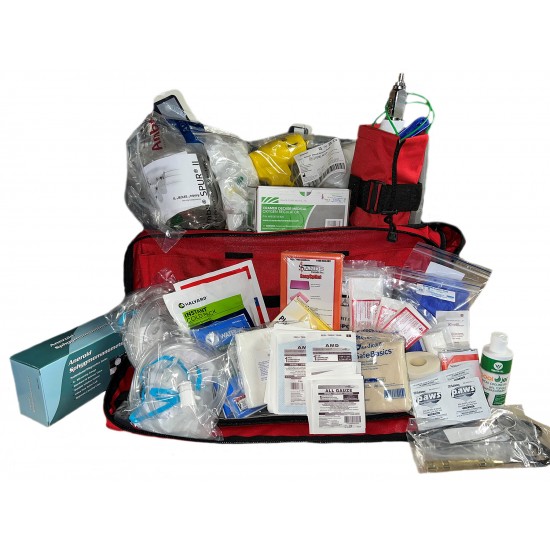Would you believe that first-aid kits are not the product of the 21st century? While they have become far more specialized with advanced supplies and equipment over the last century, the first-aid kit is, in fact, a 19th century creation. Back in 1888, Robert Wood Johnson developed what he called a first-aid cabinet. While it was a far cry from what our first responders now use to triage injured patients in various locations, the concept was the same. Give care and treatment as quickly as possible on the accident scene. First-aid kits Canada come with various supplies and tools to provide the best treatment available. If you are in need of first-aid kits Canada, look no further.
We have been providing the best first-aid supplies online for over thirty years. We supply hospitals, police departments, fire departments, and doctor’s offices with various medical supplies.
First-Aid Kits Contents
The contents of any first-aid kit should be continually updated and restocked. A fully stocked kit should be stored in the home, car, boat, workplace, or recreational area. Accidents can occur anywhere. The very nature of the word accident suggests they are entirely random. This is why it is so important to be prepared for when one occurs.
The list below are the contents of a general use first-aid kit:
- Emergency phone numbers for poison control, personal doctors, EMS services
- Home and office phone numbers for family members, friends, or neighbors who should be notified in an emergency
- Sterile gauze pads in both small and large sizes to place over wounds
- Adhesive tape
- Roller bandages and triangular bandages used to hold dressings in place or to make an arm sling
- Adhesive bandages in assorted sizes
- Scissors
- Tweezers
- Safety pins
- Instant ice packs
- Disposable non-latex gloves
- Flashlight with extra batteries
- Pencil and pad
- Emergency blanket
- Eye patches
- Thermometer
- Barrier devices such as pocket mask or face shield
- First-aid manual
Emergency Supply Kit
While first-aid kit supplies are important to maintain when addressing injuries there are other supplies needed in an emergency situation.
- 4 quarts of water per person per day
- Packaged
- Walking shoes
- Rain gear
- Change of clothing
- Sleeping bags and blankets
- Battery-powered radio and flashlight both with extra batteries
- Spare set of car keys
- Extra cash
- List of medical conditions of the party using the kit
Emergency Car Kit
While many people might think to buy a first-aid kit, they rarely consider having an emergency kit for their car. Some of the items which can prove useful if you have car trouble or your car has gone off the road are as follows:
- Battery powered radio and flashlights with extra batteries
- Spare blankets
- Jumper cables
- Fire extinguisher
- First-aid kit and manual
- Bottled water and freeze-dried foods
- Flares
- Shovel
- Tire repair kit and pump
First-Aid Skills
While a first-aid kit is a great tool for treatment of injuries, a tool is only as good as the person using it. The best stocked medical bag will not save anyone unless the people providing the care are trained and know what they are doing. While it is vital to keep the medical bag well stocked with first-aid supplies, it is even more important to practice various skills such as:
- Hands-only Cardiopulmonary Resuscitation
- How to Operate an Automated External Defibrillator
- How to Apply a Tourniquet/Control bleeding
- How to Administer Seizure First-Aid
- How to Use the Contents of the First-Aid Kit
Other Considerations
One of the most common problems when trying to find lost hikers or campers is that no one was made aware of the trip. This creates problems for rescue personnel and search parties. It delays the start of search efforts which can sometimes mean the difference between life and death. It is important to let loved ones know where and when the trip is going to take place with detailed locations and sites. A plan should also be turned in at the local ranger station as well. They will be aware of the local terrain and provide you with any suggestions concerning areas to avoid due to current weather or trail conditions.
By planning ahead and notifying others of your trip, if something does go wrong, help can be sent as soon as possible. This can greatly increase the chances of survival and recovery. Being careless can create a perfect storm. Without a plan known to others, the search and recovery effort to provide potential life-saving care will be delayed. Every minute counts.
Final Thoughts
Typically, in emergency situations, it is a bystander, friend, coworker, or family member who comes across the scene of an accident. It is not EMS, fire services, or police who are at the scene first. In those first few moments of arriving, their decisions can save someone’s life. Time and time again, the action of concerned individuals has made the difference in saving the life of an injured person.
If you have any questions regarding first-aid kits Canada or first-aid supplies, don’t hesitate to reach out to us. We have been supplying first responders with the best in medical kit supplies for over thirty years. Our equipment and supplies are relied upon day in and day out to save lives and treat life-threatening injuries. Reach out to us for more information about our wide range of first-aid products online. We are your partner in first-aid supplies and equipment.

